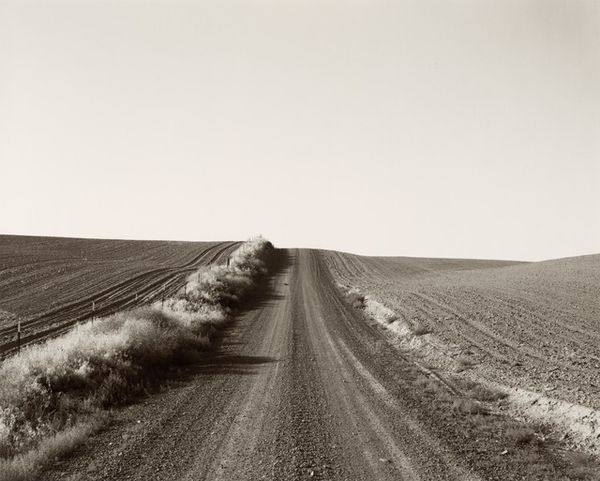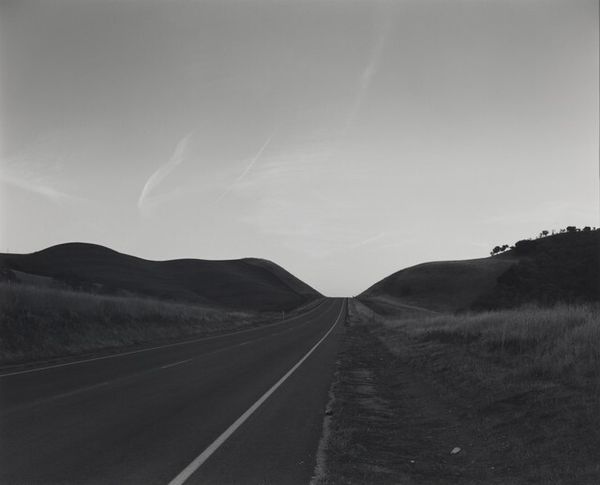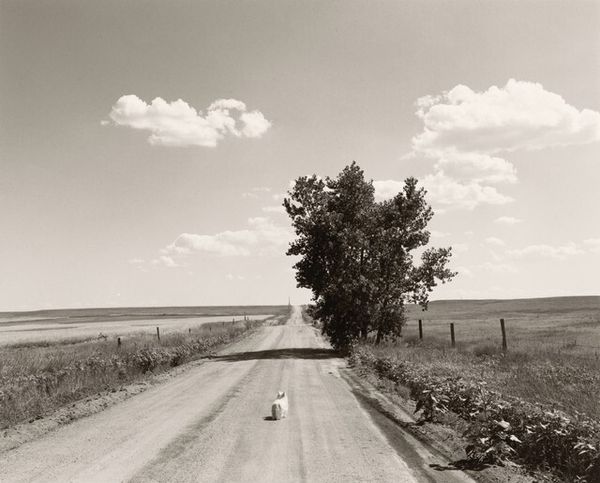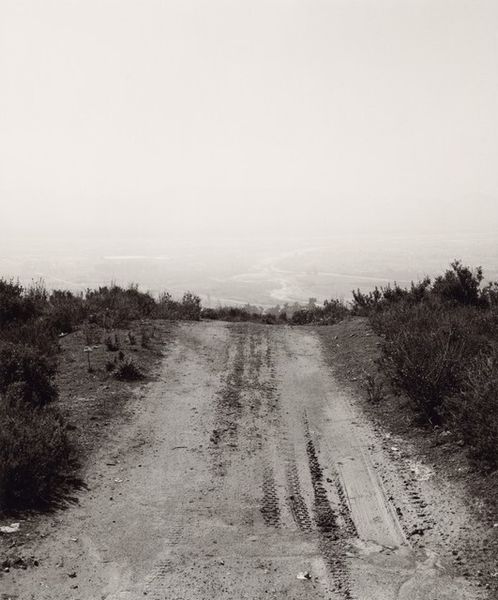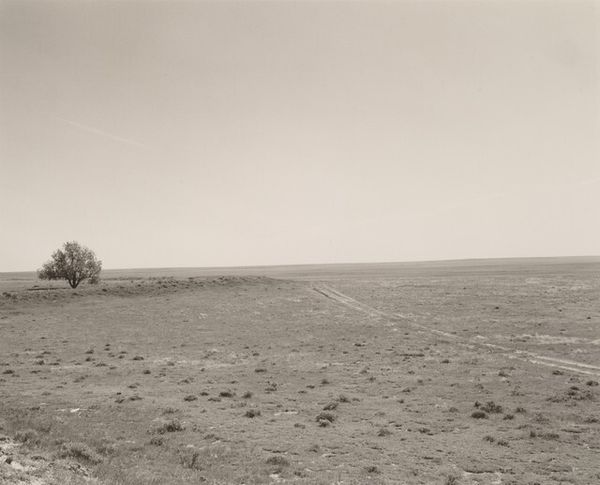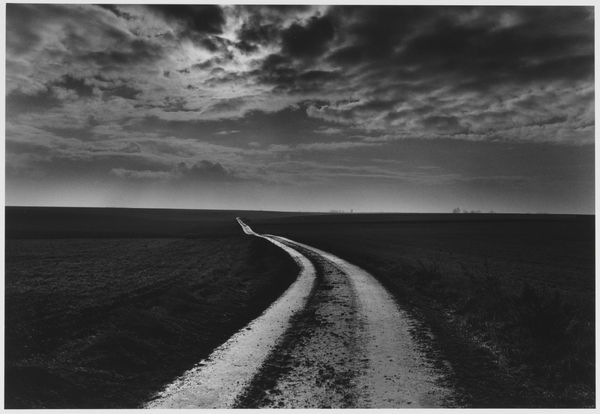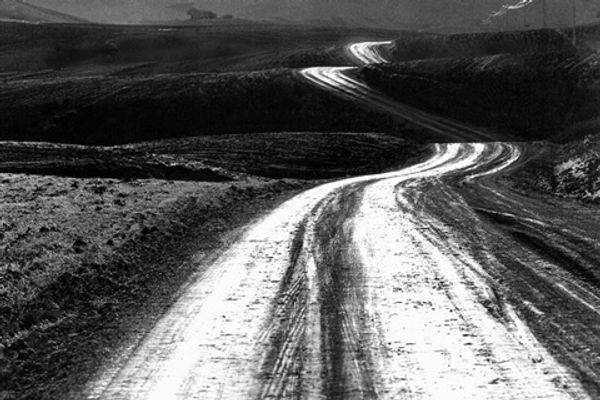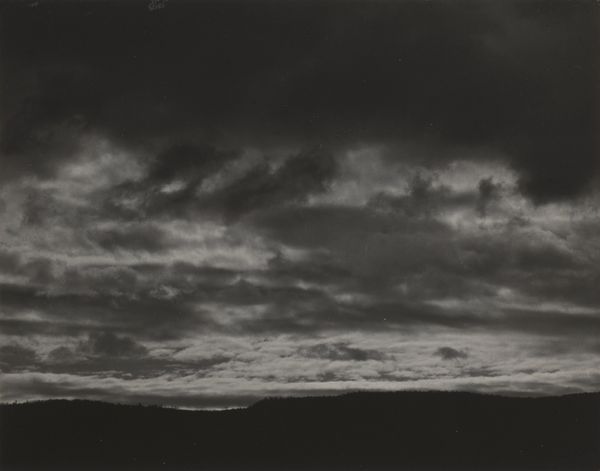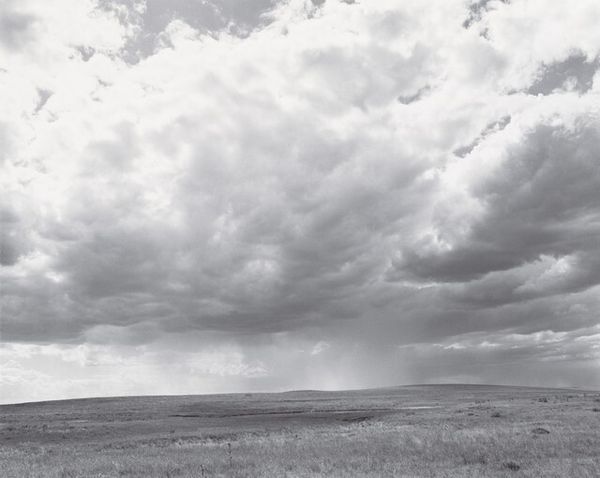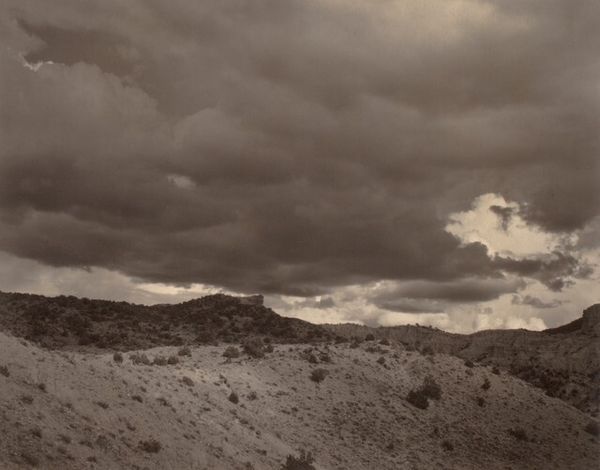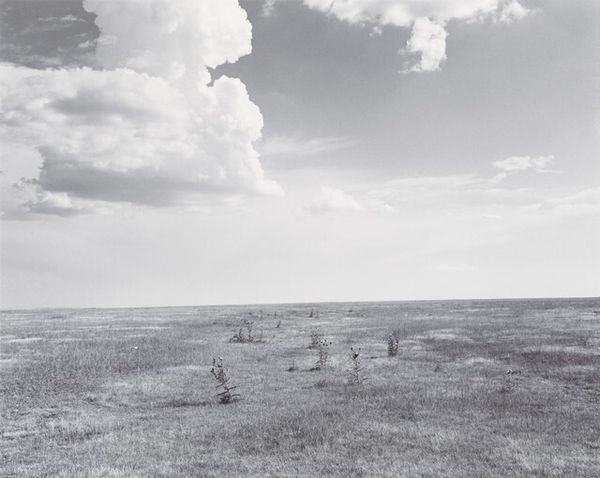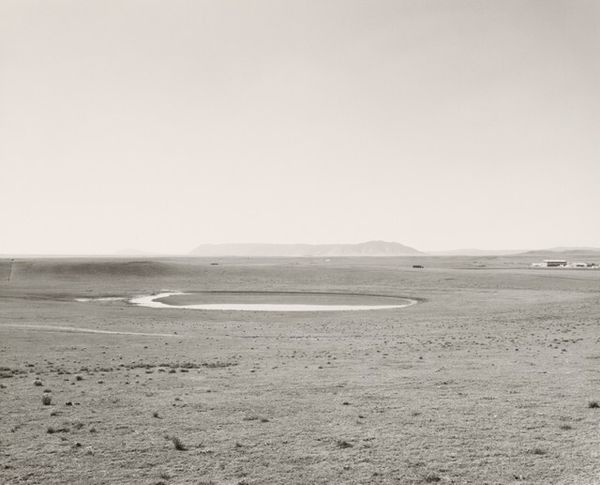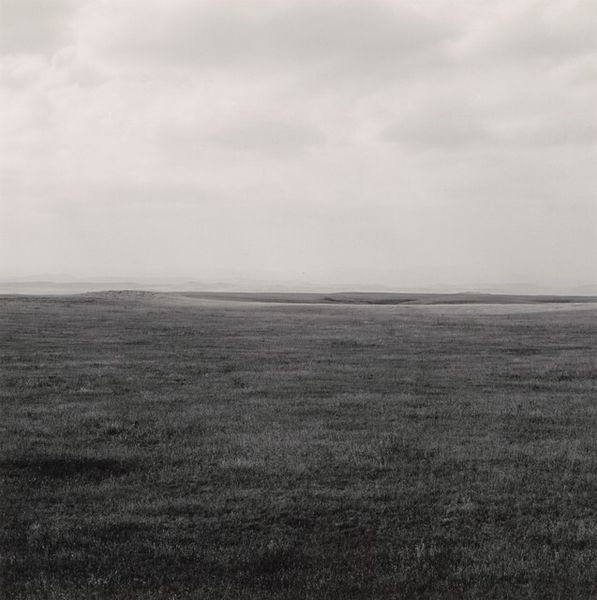
photography, gelatin-silver-print
#
black and white photography
#
landscape
#
photography
#
gelatin-silver-print
#
monochrome photography
#
realism
Dimensions: image: 21.9 x 33.2 cm (8 5/8 x 13 1/16 in.) sheet: 27.4 x 38.9 cm (10 13/16 x 15 5/16 in.)
Copyright: National Gallery of Art: CC0 1.0
Curator: Standing before us is "Landscape/Peru," a 1948 gelatin silver print by Robert Frank. What impressions does it evoke for you? Editor: Bleakness, certainly. The almost complete absence of detail lends a brutal starkness to the scene. The tonal range, largely grayscale, contributes to its solemn feel. The road cleaves the composition precisely in two, creating an aggressive perspective. Curator: The road can be seen as an archetypal image, leading into the unknown future or perhaps a metaphorical path through life, especially resonant post-war, when Frank captured this. Notice how the menacing clouds mirror the land; an invocation of liminal spaces and their disquiet. Editor: I see the clouds more as compositional counterweights. They dominate the frame, and yet, due to the angle, they don’t fully succeed at overshadowing the lower portion. It's a study in how line, shape, and relative darkness vie for dominance. Curator: True. Consider that the desolate landscape represents more than topography. Post-war, such landscapes often symbolized both personal and societal devastation, carrying psychological and cultural weight far beyond mere representation. The symbolism of the road leading to or from something carries allusions to salvation, but in this desolate rendering, the end is ominous. Editor: From a purely structural perspective, I appreciate how the artist harnessed light—or the relative absence of it—to guide the eye. The lighter road leads to a sort of vanishing point, framed by those somber flanks. Curator: Indeed, the horizon pulls us onward, despite its mystery. Such photographs often functioned as social commentary, urging viewers to consider the implications of the recent past. Consider the narrative: the landscape has been violated. Editor: Well, I may differ slightly on intent, I see the raw arrangement— the composition pulling us forward with varying gradations, with the light serving to guide the eye, culminating at the top. The structural components combine in order. It leaves me awed by the compositional elements more than by its symbolic implications. Curator: I think perhaps it’s the marriage of both – form and the symbolic charge give the artwork its weight and meaning. It haunts us as viewers because it holds meaning as much as it exists as a rendering. Editor: Agreed; a worthwhile experience and further analysis.
Comments
No comments
Be the first to comment and join the conversation on the ultimate creative platform.
